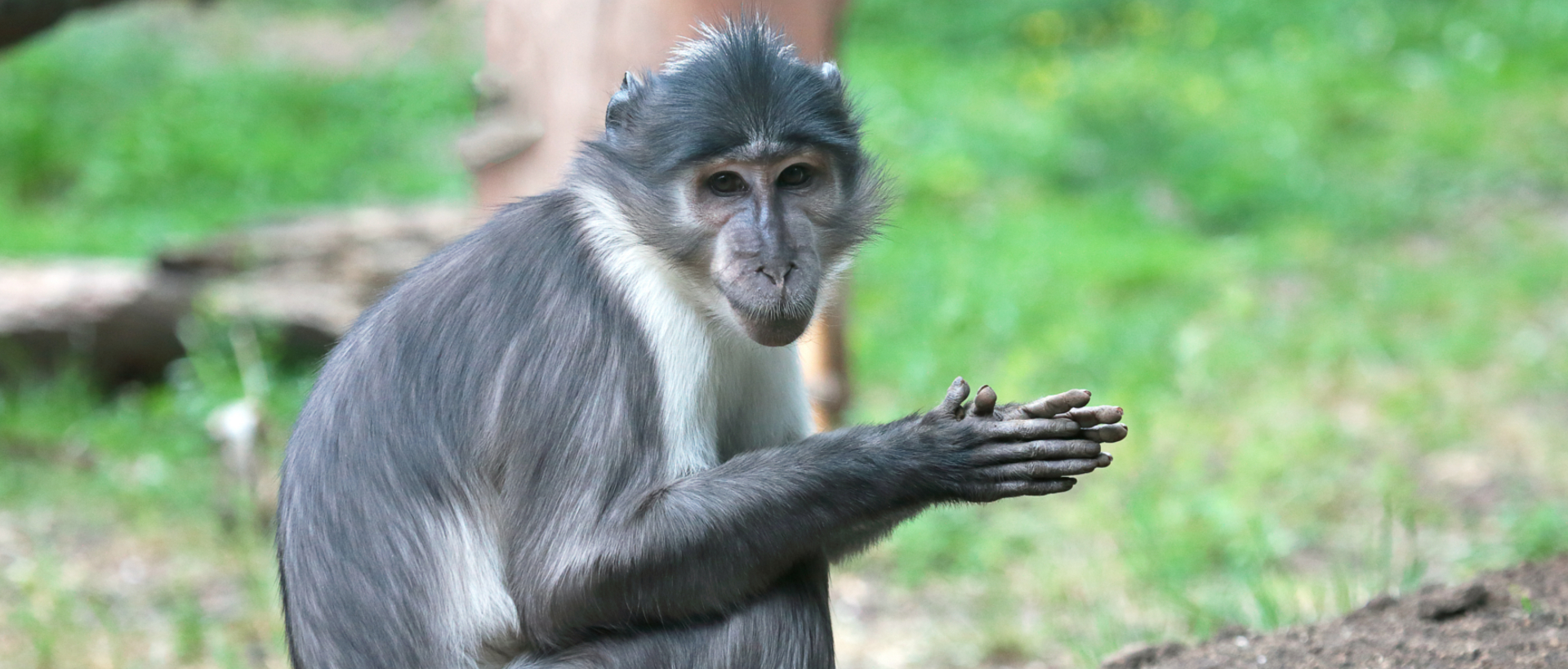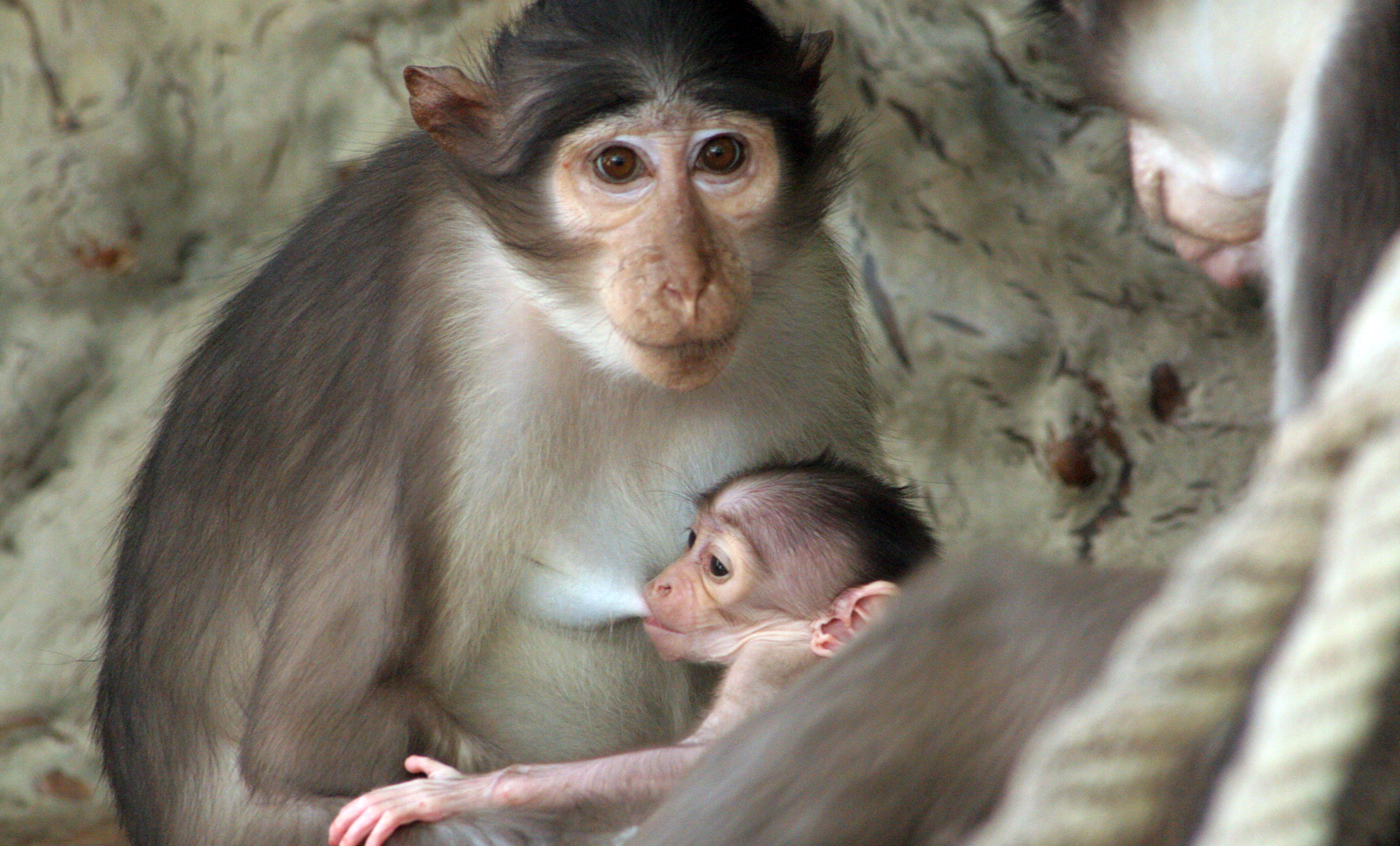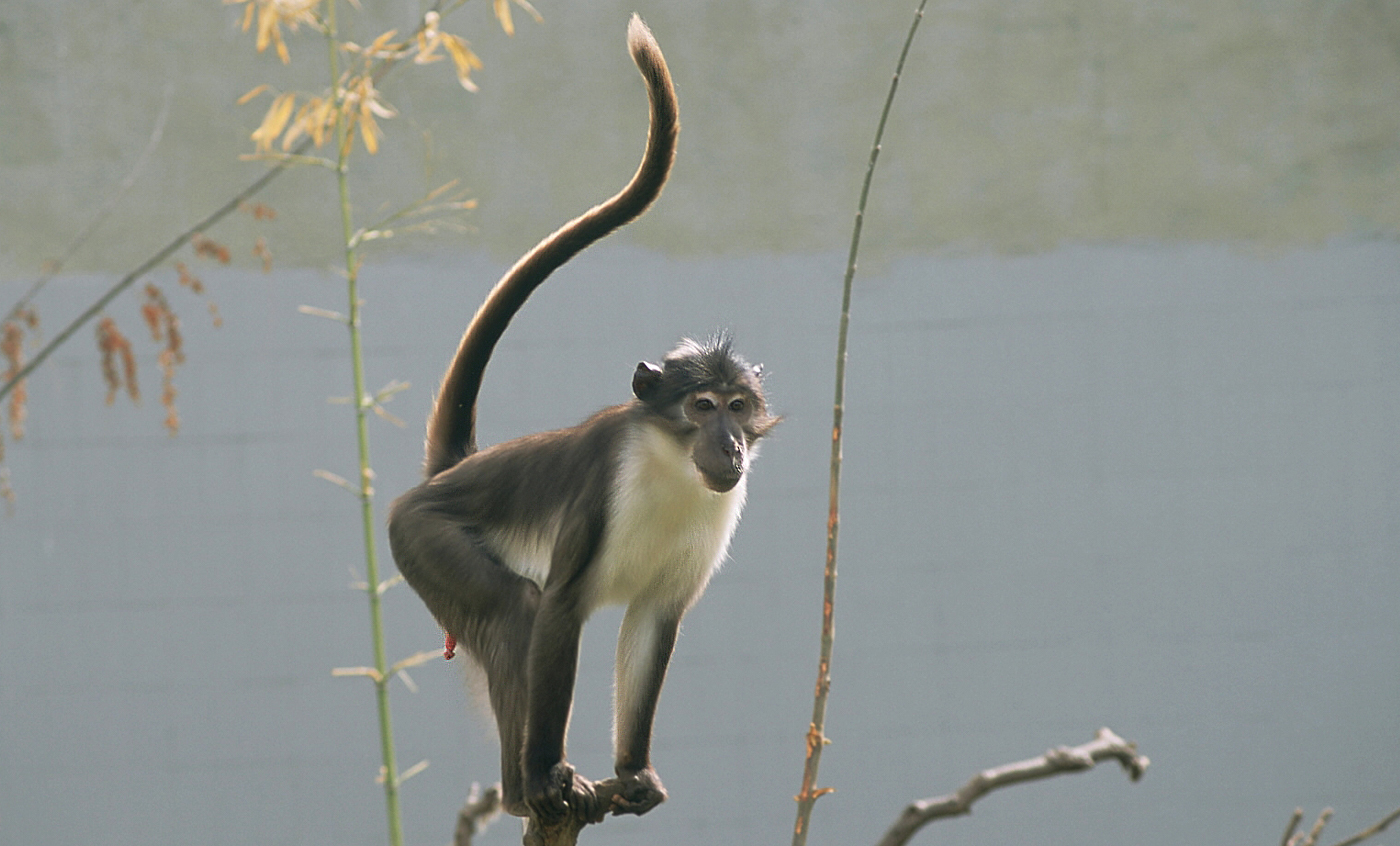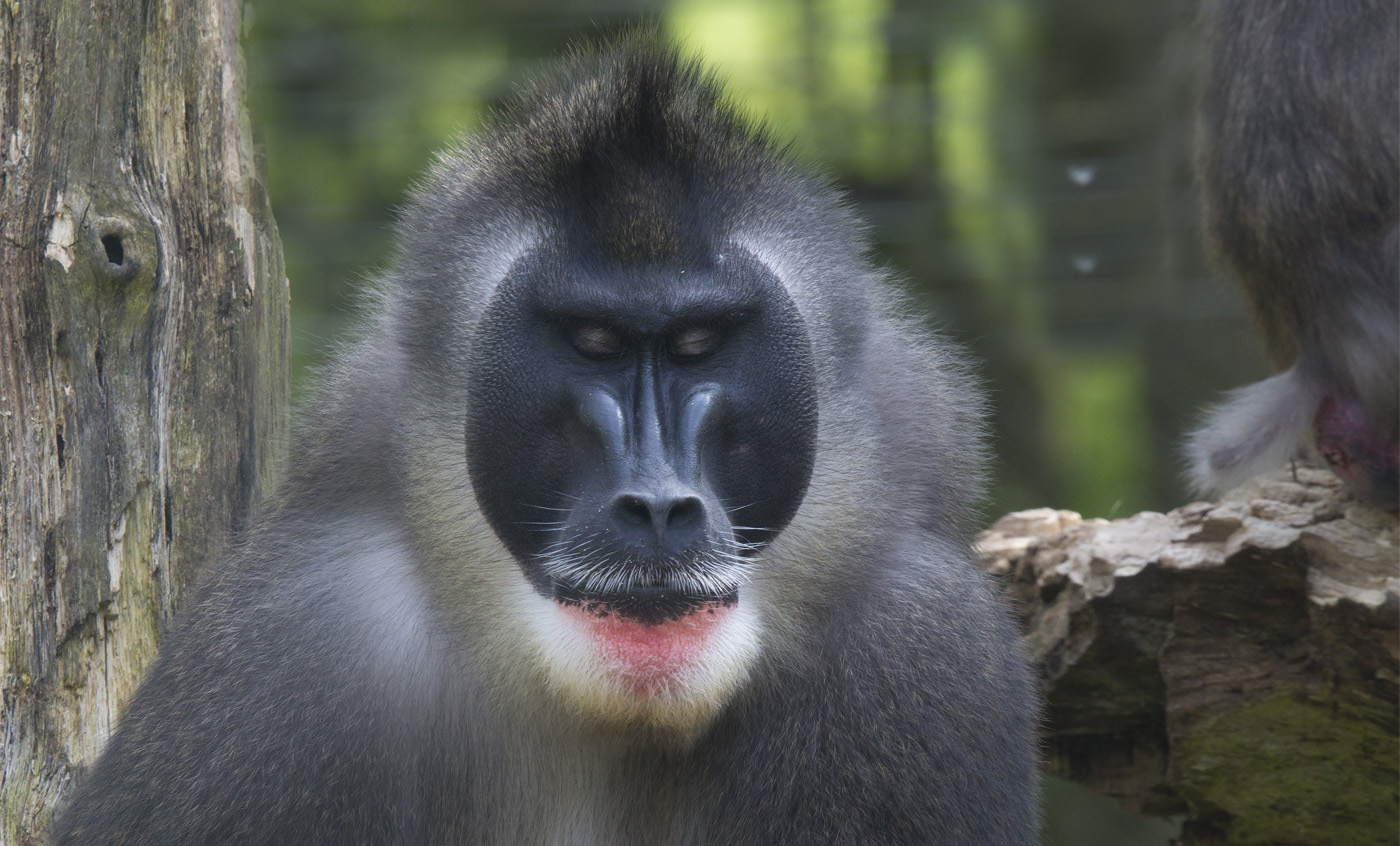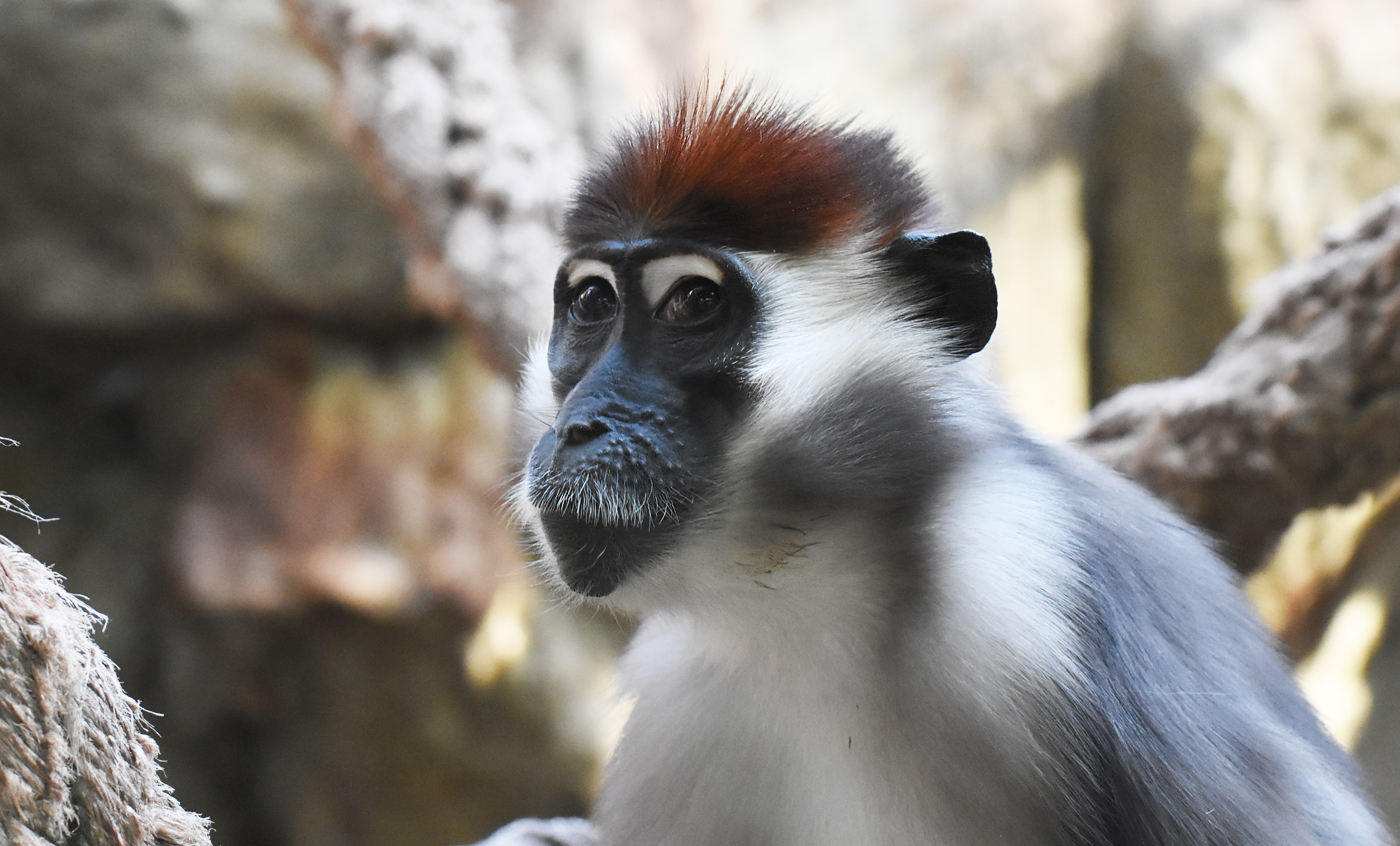White-naped mangabey
As in other mangabey species, it is an arboreal primate, typical from the wet rainforests of western equatorial Africa. It is a diurnal animal that lives in groups of up to thirty individuals. Its diet is omnivorous and it is able to swim for short distances, in order to obtain food.
This species is distinguished by the white patch in the shape of a half moon that can be found on its nape.
Breeding program
Natural habit
Ghana, Ivory Coast and Burkina Faso.
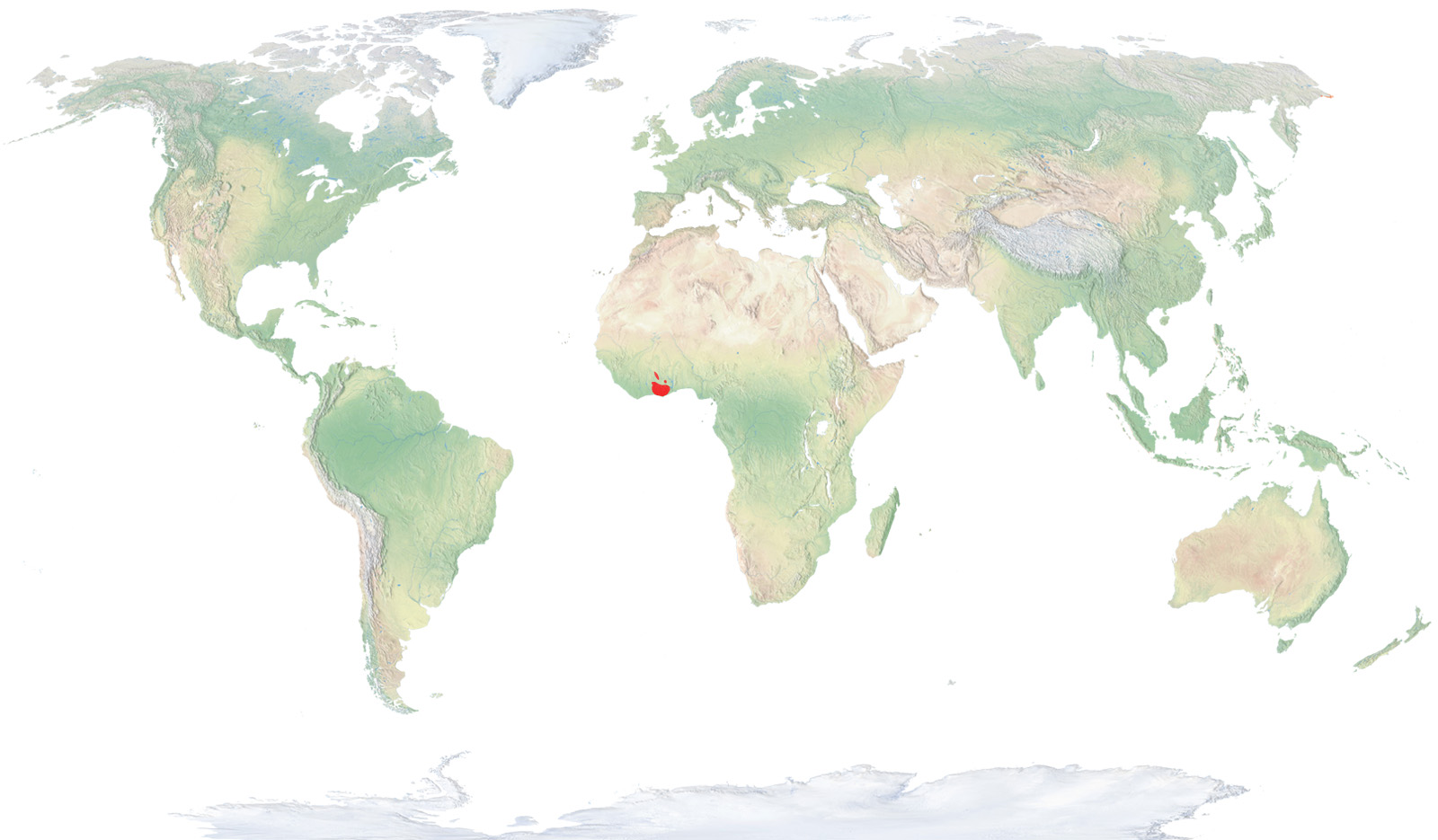
- Distribution / Resident
- Breeding
- Wintering
- Subspecies
Risk level
- Extint
- Extint in the wild
- Critically endangered
- In Danger
- Vulnerable
- Near threatened
- Minor concern
- Insufficient data
- Not evaluated
Taxonomy
Physical characteristics
Biology
Reproduction
Biology
Its body fur is greyish on the back, tail and external part of the limbs, while the underparts have a whitish hue. It is distinguishable by its half-moon shaped white patch on the top of its head. Females are smaller than males.
It inhabits different primary and secondary rainforests, including mangroves and flooding and riparian forests.
Its diet is omnivore, as it eats all kinds of plant products, such as seeds, fruits, leaves and tender sprouts, although it can also feed on invertebrates, eggs, rodents and other small vertebrates. Their strong incisors let them crack through hard shells of nuts that many other guenon species cannot open.
Gestation lasts for about six months and generally a single infant is born each time.
They are medium-sized and their tail is longer than the rest of the body, which they use to keep their balance, when jumping between trees in the jungle.
Its habits are diurnal and lives in large groups, which include more than one male, who defend them against other groups of the same species, by means of loud vocalisations and quite an aggressive behaviour. Many males leave the group upon reaching sexual maturity, while females tend to stay with the family group, with a well-established hierarchy. The main core of the group is comprised by the females and their offspring.
Although it was considered until recently a subspecies of the grey mangabey with the scientific name Cercocebus atys lunulatus, currently many scholars consider it a separate species, Cercocebus lunulatus.
Hunting for human consumption is one of the main threats they face, along with the destruction of their habitat, caused by wood exploitation, opening of clearings in order to obtain space for cattle pastures and the expansion of crops.
The Barcelona Zoo is the coordinator of the EEP (European Captive Breeding Programme) of this species.



